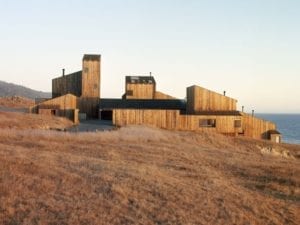“Architecture begins when you place two bricks carefully together.” Ludwig Mies der Rohe’s (1886-1969) quote is a fitting entry point to Susie Hodge’s publication. The book chronicles the evolution of building, from the pyramids of ancient Egypt to the most contemporary sustainable constructions. It is an essential handbook that offers concise introductions to key styles, navigating the symmetry of Palladian, functional Modernism, industrial High-Tech and the globally celebrated Bauhaus.
From temples and cathedrals to skyscrapers, museums and biospheres, The Short Story of Architecture selects 50 seminal structures paving the way for the discipline. The influence of the classical Greek Parthenon and Roman Pantheon are highlighted, alongside the groundbreaking Villa Savoye by Le Corbusier – a landmark in the international style, built in 1930. Frank Lloyd Wright’s Fallingwater (1939) expresses an “organic architecture.” Fast-forward to 2014 and Stefano Boeri Architetti’s Vertical Forest, takes this principle skywards, improving the air quality in Milan by incorporating over 11,000 plants.
Hodge breaks these examples down into key elements, honing in on the significance of windows, doors, spires or staircases. Many of these are structural or symbolic cornerstones, offering hidden insight into the construction of a whole. The pocket-sized manual also looks at the history of materials, from stone used at Giza to the innovation of carbon fibre. Concrete is prominent in Tadao Ando’s Himeji City Museum of Literature, Japan, whilst recycled materials take centre stage in Wang Shu’s Ningbo Museum in Zhejiang Province, China. Ultimately, this volume presents a detailed yet understandable portrait of the ever-evolving built environment.
Published by Laurence King. Find out more here.
Lead image: Frank Lloyd Wright, Fallingwater.




